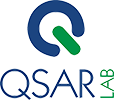Fundamentals of molecular modelling

A two-day course on the basics of molecular modeling will provide participants with a comprehensive understanding of molecular dynamics simulation and molecular docking techniques. The participant will acquire the necessary knowledge and skills to perform basic MD simulations, analyze trajectories and conduct molecular docking studies in practical applications.
The course is designed to provide fundamental knowledge and skills in the field of molecular modeling, focusing on two fundamental techniques: molecular dynamics (MD) simulation and molecular docking.
The course is in English (or Polish – if the whole group of participants will be Polish-speaking).
- Are you a student or researcher who knows that molecular modeling plays a key role in understanding the behavior of biological molecules and the interactions between proteins and ligands?
- Are you a drug discovery scientist who knows that molecular docking is a powerful tool used in drug discovery to predict how potential drug molecules bind to target proteins?
- Or maybe you are a computer scientist, bioinformatician, work in the biotechnology or pharmaceutical industry or are a self-taught person who wants to explore the application of their skills and would like to benefit from learning molecular modeling techniques.
- This course is for you!
Price
Date and place
Form
Participants
*Price includes: participation in classes, training materials, certificate of participation, coffee catering.
Programme
Day 1.
Predicting the 3D structure of a protein (AlphaFold2) and Molecular Docking
Morning Session:
Lecture:
Introduction to predicting the 3D structure of a protein – AlphaFold2 method.
Practical exercise 1:
Predicting the 3D structure of a protein by using AlphaFold2 method.
- Preparation for prediction – getting the amino acids sequence.
- Running Alphafold2.
- Comparing predicted structure with a known structure, using RMSD analysis.
- Short discussion about the results.
Lecture 2:
- Introduction to Molecular Docking.
- The significance of docking in drug discovery
- Docking algorithms and scoring functions.
Afternoon Session:
Practical exercise 2:
Molecular docking and result analysis.
- Obtaining structures of receptors and ligands.
- Preparation of protein and ligand structures.
- Generating possible ligand conformations and orientations relative to the protein.
- Evaluation of the ligand’s fit to the protein’s binding site using scoring functions.
- Ranking ligand conformations according to score values and selecting the best fitting ones, with the lowest protein-ligand interaction energy.
- Analysis of results: determining the orientation and binding position of the ligand as well as the amino acids relevant for protein-ligand interactions.
Day 1 milestones:
- Understanding the molecular docking method.
- Practical experience in conducting molecular docking of a protein-ligand complex.
- The ability to independently analyze molecular docking results.
Day 2.
Molecular Dynamics simulations
Morning Session:
Lecture:
What are Molecular Dynamics (MD) simulations and how do they work?
Afternoon Session:
Practical exercise: MD simulation of a small globular protein in water with ions
- Preparation of initial protein and ligand structures for simulation.
- Adding water around the protein.
- Adds ions to the system.
- Energy minimization.
- Stabilizing the system before simulation.
- Carrying out the MD simulation.
- Analysis of results.
Optional: computer simulations of proteins using the UNRES coarse-grained force field
Day 2 milestones:
- Understanding the fundamental principles of MD simulations.
- Practical experience of running MD simulation.
- The ability to independently analysis of results.
- All attendees will receive a course completion certificate.
- Better together - get a 10% discount on the open course for each additional employee from your company.

